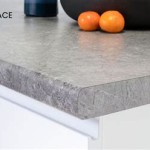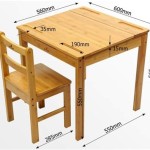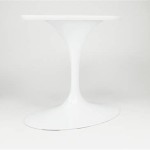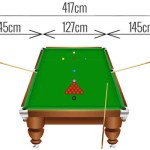Size of a Pool Table: A Comprehensive Guide
The game of pool, a staple in recreational spaces and competitive arenas alike, is enjoyed by millions worldwide. A critical element in this game is the pool table itself. The size of a pool table impacts gameplay, space requirements, and overall enjoyment. Understanding the standard dimensions and variations is therefore crucial for anyone considering purchasing a pool table or simply wanting to comprehend the nuances of the game.
Pool tables are not a one-size-fits-all product. Different sizes exist to accommodate different rooms and playing styles. The regulation sizes established by organizations like the World Pool-Billiard Association (WPA) provide a framework for professional play, while smaller tables cater to home environments and casual use.
Regulation Pool Table Sizes: The Foundation of Professional Play
The term "regulation size" when discussing pool tables primarily refers to a table with a playing surface that measures 9 feet by 4.5 feet. This dimension, also expressed as 108 inches by 54 inches, is the standard for professional tournaments and serious players. It is important to note that these measurements refer to the playing surface inside the cushions, not the overall exterior dimensions of the table.
These regulation-size tables offer a larger playing field, demanding greater precision and skill from players. The increased distance between balls necessitates more strategic shots and accurate cue ball control. The larger playing area also allows for more complex shot patterns and challenges players to anticipate and execute more intricate maneuvers.
While 9-foot tables are the standard for professional play, they require significant space. A room that is at least 14 feet by 18 feet is generally recommended to comfortably accommodate a 9-foot table, allowing players to maneuver their cues without obstruction. This space considers the standard cue length of 58 inches and provides adequate clearance on all sides of the table.
The cloth used on a regulation-size table is also a factor in playability. Often, high-quality, tightly woven wool blends are used to ensure a smooth and consistent playing surface. The faster speed of these cloths, coupled with the larger playing area, significantly increases the difficulty and demands of the game.
Furthermore, the rails (cushions) on a regulation table are designed to provide consistent ball rebound and accurate angles. The materials and construction of these rails play a crucial role in the predictability and fairness of the game. Professional players rely on the consistent response of the rails to execute complex bank shots and position the cue ball effectively.
Smaller Pool Table Sizes: Options for Homes and Recreational Spaces
Recognizing the spatial limitations of many homes and recreational environments, manufacturers offer a range of smaller pool table sizes. Common sizes include 8-foot, 7-foot, and even smaller "bar-style" tables. These tables retain the fundamental principles of pool but are scaled down to fit into tighter spaces.
An 8-foot pool table, measuring 88 inches by 44 inches (playing surface), provides a comfortable compromise between the larger regulation size and smaller bar tables. A room size of at least 13 feet by 17 feet is recommended for an 8-foot table. This size is popular for home use as it offers a challenging game without requiring an excessively large room.
Seven-foot pool tables, with a playing surface of 78 inches by 39 inches, are another common option for home use and recreational settings like bars. These tables are more compact and require less space, making them suitable for smaller rooms. A room size of approximately 12 feet by 16 feet is generally sufficient for a 7-foot table.
Bar-style pool tables are typically even smaller, often measuring around 6 feet in length. These tables are designed for quick games and casual play in bars and other public spaces. While they offer a less challenging experience than larger tables, they remain a popular and accessible option for entertainment.
The choice between an 8-foot or 7-foot table often depends on the available space and the player's preferences. While the 8-foot table offers a more challenging playing experience similar to a regulation table, the 7-foot table is easier to fit into smaller rooms and may be more suitable for beginners or casual players.
The cloth and rail quality on smaller tables can vary significantly depending on the manufacturer and price point. While some smaller tables feature high-quality components comparable to regulation tables, others use cheaper materials that may affect gameplay. It's important to consider the quality of the cloth and rails when choosing a smaller pool table to ensure a satisfactory playing experience.
Factors Influencing Pool Table Size Selection
Selecting the appropriate pool table size involves considering several factors, with the primary consideration being the available space. Accurately measuring the room is essential before making a purchase. The size of the room should accommodate the table itself, plus at least 5 feet of clear space around all sides to allow players to comfortably maneuver their cues.
The skill level of the players is another crucial factor. Experienced players who are accustomed to playing on regulation-size tables may prefer a larger table, even if it requires some spatial adjustments. Beginners or casual players may find that a smaller table is more manageable and enjoyable.
The intended use of the pool table also influences the size selection. If the table is primarily intended for serious practice and competitive play, a regulation-size or 8-foot table may be the best choice. If the table is intended for recreational use and family entertainment, a 7-foot or even smaller table may be more appropriate.
Budget is another significant consideration. Larger pool tables typically cost more than smaller tables due to the increased materials and construction involved. The quality of the components, such as the slate, cloth, and rails, also affects the price. It is important to establish a budget before beginning the search for a pool table and to consider the long-term value of a higher-quality table.
The aesthetic of the room can also play a role in the size selection. A larger pool table can be a statement piece in a dedicated game room, while a smaller table may be more discreet and blend in with the existing decor in a multi-purpose room. The style and finish of the pool table should complement the overall design of the space.
Finally, consider the potential for future moves or renovations. If there is a possibility of moving to a smaller home in the future, a smaller pool table may be more practical. Similarly, if there are plans to renovate the room in which the pool table will be placed, it is important to consider how the size of the table will fit into the redesigned space.
In conclusion, selecting the right size of pool table involves carefully considering the available space, skill level, intended use, budget, and aesthetic preferences. Understanding the standard dimensions and variations allows for an informed decision, ensuring a satisfying and enjoyable pool-playing experience.

The Official Size Of A Pool Table Canadian Home Leisure

Pool Table Room Size Calculator

What Is The Standard Size Of A Pool Table Measurement Guide Room

Pool Table Room Size Guide Chart Birkbeck Billiards

How To Measure A Pool Table 4 Dimensions

What Size Room Will I Need For My Snooker Table Liberty

Supreme Pool Table Room Size Information

Pool Table Room Size Guide Home Leisure Direct

Pool Table Sizing Dimensions Room Size

Room Size Pooltables Com








